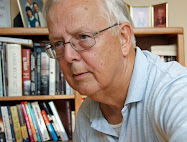Today I have the honor and privilege of hosting
Chester Campbell on this stop of his blog tour for his mystery
The Surest Poison. He will give away several copies of his books during the tour, which runs through May 1. Leave a comment here and you may be a winner in the contest. For more details got to his
Mystery Mania blog.
Make the Setting Come Alive
Some authors strive to make setting a character in their novels. I can’t say that I had that in mind with
The Surest Poison, but I did endeavor to make the setting come alive so you would feel that you were there in person. The three main settings in the book are Nashville, which covers all of Davidson County in our metropolitan form of government; Ashland City, the small county seat just to the west; and Lewisville, a fictional small town about 50 miles to the southwest.

I like to keep the action moving by limiting descriptions of locations to the minimum that will give a graphic sense of place, enough to trigger the reader’s imagination. My first editor always said don’t underestimate your readers. They know a lot more than you think they do. I prefer to let them give their imaginations free reign.
Another thing about setting is that it can provide information that gives more depth to your characters. As an example, here is PI Sid Chance’s exercise routine:
Up early the next day, decked out in gray sweat pants and a faded Yellowstone tee shirt, Sid got back to his regular morning run through the neighborhood. He covered four miles at a brisk pace, honing his powers of observation as he went. He noted the black van in the gravel driveway, the ornamental birdbath beside an oak tree, the red bicycle leaning against a fieldstone house, the large white mailbox with a bashed-in side. Last night’s blustery wind had been replaced by a less turbulent breeze that rustled the trees, tingeing the chilled air with the scent of damp leaves. He watched the sunlight filter through baring limbs and paint slanted yellow stripes on the pavement. This was a special time of day that resonated with his love of the outdoors. He filled his lungs with air and sweated like a boxer in the ring and adored every minute of it.
Sid is my protagonist. He lives and works in Madison, a suburb on Nashville’s northeast side. Here’s how his office location looks as he arrives one morning before daylight:
Sid took the cutoff north to Gallatin Pike, Madison’s Main Street. His office, a grudging requirement of his new life, occupied a corner in a glass and stone building near RiverGate Mall, anchor for the community’s primary shopping area. One strip center after another lined both sides of the street, deserted mini-cities at this time of day.
For a different view of Nashville, here is what Sid sees from his lawyer-client’s office downtown:
Sid looked out a broad window at the dwarf-like lunchtime figures scurrying along the sidewalk below. After several years as a small town police chief, followed by three years of isolation at his cabin in the woods, he found it difficult to adjust to Nashville’s booming growth, both downtown and in the suburban counties. New skyscrapers had changed the skyline, and the planned 70-story Signature Tower would usher in a whole new wave of changes. Developments like Nissan North America’s new international headquarters in Brentwood reshaped the suburbs. It was hardly the quaint Southern town he remembered from his youth.
The Surest Poison’s plot involves Sid’s attempt to track down the man responsible for dumping a massive amount of a toxic chemical behind a small plant near Ashland City. Sid and Jaz LeMieux, his part-time associate, are directed to the rural community that suffered health effects from the pollution.
They found the creek and followed the road beside it, soon reaching a spot where the land sloped away from a high wooded hill that appeared to be the one behind the HarrCo plant. Along the bottom of the hill, a hodgepodge of small frame or asbestos siding houses were sandwiched among a few single or doublewides. They saw one typical old two-story farmhouse. Most had battered pickups parked in front. A hayfield spread off to the other side of the road. Large, round bales lined a rickety fence.
Sid Chance grew up in Nashville but spent 18 years as a National Park ranger and 10 years as a small town police chief before shifting to private investigator. I invented the town of Lewisville, where he worked as top cop. The name came from its location near where Meriwether Lewis, organizer of the Lewis and Clark Expedition, died along the Natchez Trace, a historic trail in the 1800s that ran from Nashville to Natchez, Mississippi. When Sid takes Jaz down to question a couple of people in Lewisville, here’s what they see:
Beyond the grounds of a new high school, older houses lined the highway. That soon gave way to commercial buildings, the usual dotting of fast food restaurants and service stations, and, at the center of town, a typical square housing the old red brick courthouse. A statue of the famed explorer, Meriwether Lewis, stood on a pedestal in front of the building.
To give a better feel for what they faced when calling on the man who caused Sid the most trouble during his law enforcement career, I painted a little more detailed picture of the man’s business.
The Long Branch Saloon had a rustic wooden front that fit the name like cowboys fit saddles. Inside were black walls, round tables and booths, and a long bar made of dark wood that could have come right out of some Old West ghost town. Lamps made to look like oil lanterns cast a pale glow over the room. Two men sat at the bar, workmen dressed in jeans and ball caps, beers shedding trickles of foam on the counter. A woman with streaks of gray in her hair and a man in a tweed sports jacket leaned toward each other at a table just beyond the bar. The man’s shirt collar gapped open to bare a gold medallion on a heavy necklace and the hint of a hairy chest.
The scene becomes more bleak as they head for Hank Keglar’s office.
He followed the bartender’s directions and entered a narrow passageway. It had been years since he was in this place, and he’d forgotten how desolate it looked. With one small bulb in the ceiling, the area gave the dusky appearance of a cave entrance. Dark brown walls emphasized the perception. Even the floor had a rough feel, covered by a frayed carpet of indistinct color. Sid and Jaz walked along in silence, stopping at the last door. Sid knocked.
Several scenes take place around Jaz LeMieux’ mansion near the county line on the south side of Nashville. This is how Sid views it on his first visit:
When John Wallace opened the barrier, he drove until the mansion came into view. The house sat on a small knoll that likely would have provided picturesque views from the upper story windows except for all the towering oak and elm trees that surrounded it. The mansion looked like an import from the Louisiana countryside with its four gables highlighting the second floor roof and a wood-floored veranda that crossed the front and ran halfway back on both sides.
A wealthy businesswoman who inherited controlling interest in a lucrative chain of truck stops when her father died, Jaz works mostly in her home office. It’s described this way:
Jaz’s office occupied a bookshelf-lined room her mother had called the library and her father ma cachette, French for ‘my hiding place.’ A framed photo of Jaques LeMieux sat on one side of the cluttered desk, a similar picture of his wife, Gwendolyn, on the other.
It looks this way to Sid:
Crowded bookshelves stretched around the room. A large metal globe mounted in rich, dark wood sat in one corner. A wheeled ladder on a track stood beside a wall of books, reminding Sid that she had spoken of her dad as a short man. He would have needed the ladder to reach the upper shelves.
Setting is a vital part of any story and can serve many purposes besides describing a location. It should be dynamic and pique the reader’s interest in learning more about what is going on. In some mysteries, the setting proves such a compelling feature that it leads to the solution of the crime. Can you think of one that fits this description?
About Mystery Writer Chester D. Campbell 
Chester Campbell is the author of two mystery series featuring private investigators.
The Surest Poison, first book in the Sid Chance series dealing with a chemical pollution case, is just out. He has written four Greg McKenzie novels featuring a retired Air Force investigator and his wife. Prior to turning to fiction writing, Campbell worked as a newspaper reporter, freelance writer, magazine editor, political speechwriter, advertising copywriter, public relations professional and association executive. An Air Force intelligence officer in the Korean War, he retired from the Air Force Reserve as a lieutenant colonel. Currently secretary of the Southeast Chapter of Mystery Writers of America and president of the Middle Tennessee Chapter of Sisters in Crime, he lives in Madison, Tennessee with his wife, Sarah, and an 11-year-old grandson.
Synopsis of The Surest PoisonThree seemingly unrelated murders crop up during the investigation of a decade-old chemical dump that plagues a rural community west of Nashville. PI Sid Chance, a former National Parks ranger whose career as a small town police chief was cut short by malicious accusations of bribery, pursues the case after being coaxed out of self-imposed exile by Jaz LeMieux, a wealthy ex-cop. Is the man responsible for the pollution dead or alive? Who is having Sid tailed and threatened? When Jaz helps with the investigation, she is awakened by an explosion behind her mansion. Is it related to the abduction of her housekeeper’s grandson, or Sid’s case? As they unravel a hidden conspiracy that used murder to silence witnesses, Sid finds himself confronting the unsavory people responsible for his past troubles.

 We just returned from an RV trip into central Texas, where the April wildflowers are beautiful, and the politics—well, they are what they are. The hateful political sign is in an empty storefront in downtown McGregor, not far from W's old stomping ground of Crawford. Note the "FBO" at the top. Any guesses as to what that stands for?
We just returned from an RV trip into central Texas, where the April wildflowers are beautiful, and the politics—well, they are what they are. The hateful political sign is in an empty storefront in downtown McGregor, not far from W's old stomping ground of Crawford. Note the "FBO" at the top. Any guesses as to what that stands for?


 I like to keep the action moving by limiting descriptions of locations to the minimum that will give a graphic sense of place, enough to trigger the reader’s imagination. My first editor always said don’t underestimate your readers. They know a lot more than you think they do. I prefer to let them give their imaginations free reign.
I like to keep the action moving by limiting descriptions of locations to the minimum that will give a graphic sense of place, enough to trigger the reader’s imagination. My first editor always said don’t underestimate your readers. They know a lot more than you think they do. I prefer to let them give their imaginations free reign. Chester Campbell is the author of two mystery series featuring private investigators.
Chester Campbell is the author of two mystery series featuring private investigators. 
















